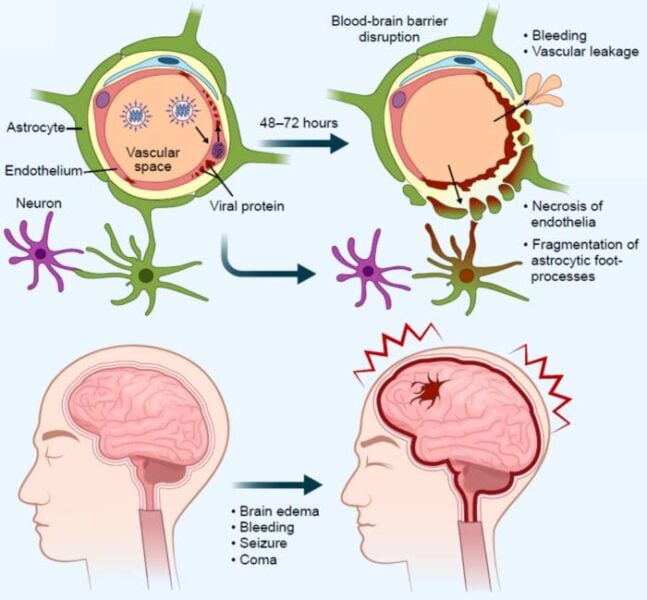Researchers from Osaka University have discovered that the influenza virus can enter the brain through endothelial cells, causing a serious condition known as influenza-associated encephalopathy (IAE). The study, published in _Acta Neuropathologica_, also identifies potential treatment strategies for this life-threatening disease.
Unraveling the Mystery of Influenza-Associated Encephalopathy
IAE is an increasingly common complication of the flu, but the mechanism by which the influenza virus enters the brain and causes encephalopathy symptoms has remained largely unknown. The lack of a definitive treatment for IAE prompted the Osaka University research team to investigate this mystery.
Using a combination of human brain samples, a mouse model, and cell culture methods, the researchers found that the influenza virus tends to accumulate in endothelial cells, which create a protective barrier between the blood and the brain.
“In the human brains, the virus-injected mice, and the cultured cells, the influenza virus tended to accumulate in endothelial cells,” explains lead author of the study Shihoko Kimura-Ohba. “These cells create a barrier between the blood and the brain, and are important for protecting the brain from harmful substances.”
New Treatment Strategies Targeting Viral Protein Production
The researchers observed that the influenza virus wasn’t actively reproducing within the endothelial cells, but there was a significant accumulation of viral proteins. This realization led them to explore antiviral medications that target viral transcription and translation, the processes responsible for protein production, rather than those aimed at stopping viral proliferation.
When tested on endothelial cells treated with influenza virus, these classes of antivirals showed promising results, reducing viral protein accumulation and cell death. In the mouse model of IAE, early administration of these antivirals proved highly effective, suggesting their potential usefulness in human patients.
“When we saw this viral protein accumulation in the brain, we realized that antiviral medications aimed at stopping viral proliferation were unlikely to help,” says Tomonori Kimura, senior author of the study. “However, antivirals aimed at stopping viral transcription and translation—vital processes for making proteins—are also available.”
The findings of this study have far-reaching implications, as many different viruses, including COVID-19, can cause encephalopathy. With more than half of all IAE patients either dying or experiencing long-lasting symptoms, a better understanding of how viruses cause encephalopathy is crucial for developing new and effective treatments.
“Viral entry and translation in brain endothelia provoke influenza-associated encephalopathy,” was published in Acta Neuropathologica at DOI: https://doi.org/10.1007/s00401-024-02723-z
Keyword/Phrase: Influenza Virus Brain Invasion


